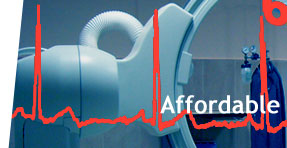INDIAN MEDICAL DEVICES REGULATORY AUTHORITY (IMDRA)
Advances in biomedical engineering and technology have led to evolution of several biomedical devices and critical care equipment. It is estimated that the medical device industry in India is worth US 1.5 billion dollars. At present over 80% of the market is being met by import. Various academic and research organisations as well as private entrepreneurs now have started taking active interest in the development and production of medical devices. Several important devices such as Heart Valve, Orbital Implants, Coronary Stent, Oxygenator, Cardiac Catheters, Eye Lasers, External Cardiac Pacemaker and Critical Care Ventilator have emerged as high technology research spin off from organisations like Research Laboratories such as CSIR, DRDO, DST, etc. A lot of products are also at advanced stages of development/clinical evaluation. Successes in this field, if they could be sustained, are impressive.
Biomedical devices are technology based, have a shorter life span in the market and are not similar to drugs as they do not achieve any of their primary intended purposes/uses (intended to affect the structure or any function of the body of man) through chemical action within or on the body by pharmacological/chemical/immunological means, or by being metabolised within the body. The regulatory affairs on their safety, health protection and performance, characteristics and authorisation procedures also differ from country to country.
The US FDA has a separate wing to evaluate and regulate medical and radiological devices, which in itself, is an extensive establishment with enormous staff and financing. In the European model, the safety and efficacy of the product and its quality assurance is the responsibility of the manufacturers themselves. If a third party certification is required, the manufacturers have the choice between different procedures and routes to obtain the certificate. Quality system certification and product testing approach are considered legally equivalent. Entry of a product in a market is treated as conformity of its safety and quality through the EU directives. Having avoided the pitfalls and drawbacks of the US FDA system, the European Regulatory model has evolved into one for the most effective and efficient systems in the world today. The onus of quality assurance is on the producers and any infringement in quality control leads to judicial penalisation as in the US FDA. However, from the point of view of the device manufacturer, the European system appears to be more expensive than the US approach.
There is an acute need for a regulatory control on biomedical devices in India to ensure that our public is not exposed to poor quality products or unscrupulous elements of society. Also, the advantages of having a device regulation to the various segments of the developmental chain-the R&D groups, the manufacturer, the clinicians and finally the patients have to be clearly elucidated. There is no doubt that medical device regulation will be advantageous to one and all, provided that it is well implemented and administered. It is neither feasible nor probably desirable, to create a centrist structure like FDA here in India. The solution lies in creating a financially self-sustaining regulatory body, which can handle administration of medical devices without creation of a big infrastructure, and without transgressing on the work-area of other existing agencies. In essence, the body needs to take on the responsibility of CRDH (excluding work undertaken by pre-existing agencies) with basic minimum financial back-up and other resources unlike its US counterpart. It is recommended that a regulatory body for biomedical devices be created by Govt. of India. Indian Medical Devices Regulatory Authority (IMDRA) will be the apex body responsible for implementation of the country’s medical devices regulations.
It is obvious that the IMDRA model has to have roots in the European model due to cost considerations, lack of infrastructure, flexibility of the system, and finally minimal bureaucratic control. However, in India, manufacturers are generally not as technically competent and are generally mere investors. If the European model was to be incorporated as such, it shall act as a damper for medical device industry because QC, which is often very critical and a costly affair, is simply out of reach of most prospective manufacturers. Suitable changes, therefore, need to be introduced in the model to adapt it for Indian conditions. But by allowing technical elaboration to take place in the standards field, this system frees the requirements from the bureaucratic burdens and enables them to draw on expertise that’s available in the world rather than just in an individual European state.
Existence of disparities in regulatory procedures of different country creates barriers to trade, and there is also a need to harmonize national standards in order to minimize regulatory barriers, facilitate trade and improve access to new technologies. Harmonisation also reduces the cost of implementing regulations for government and local industry. India should play an important role in AHWP and should take advantage of the harmonisation. This will help in marketing and will ensure that we are not behind in the race. |

















